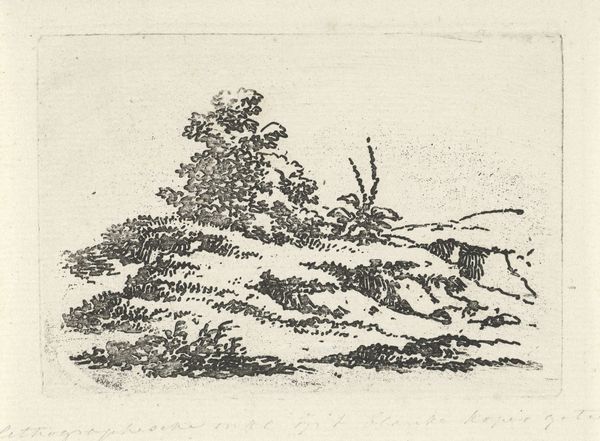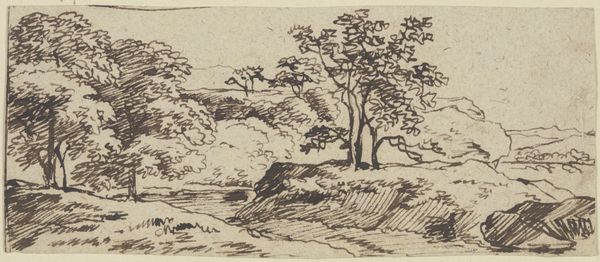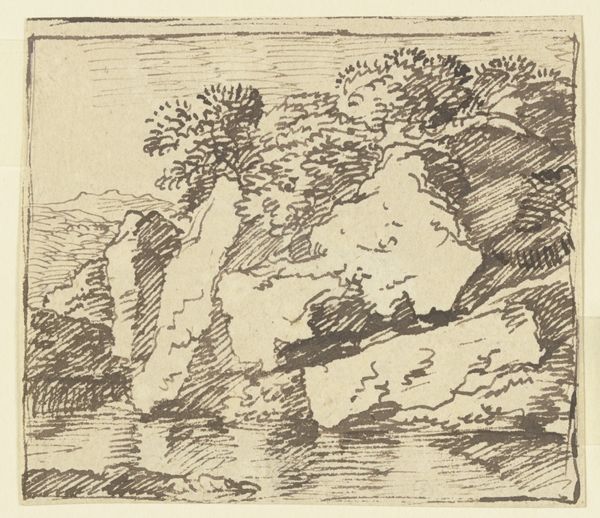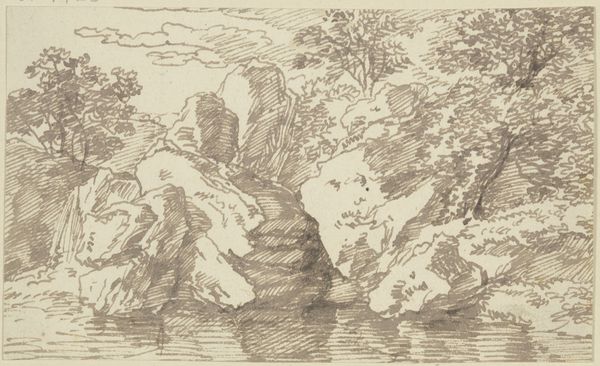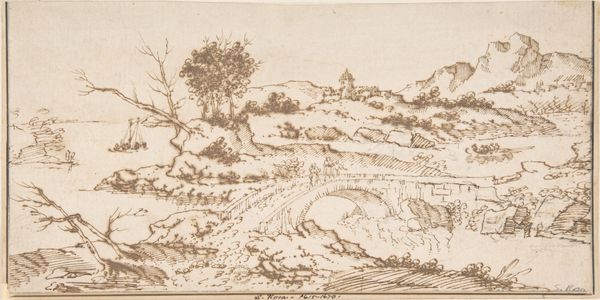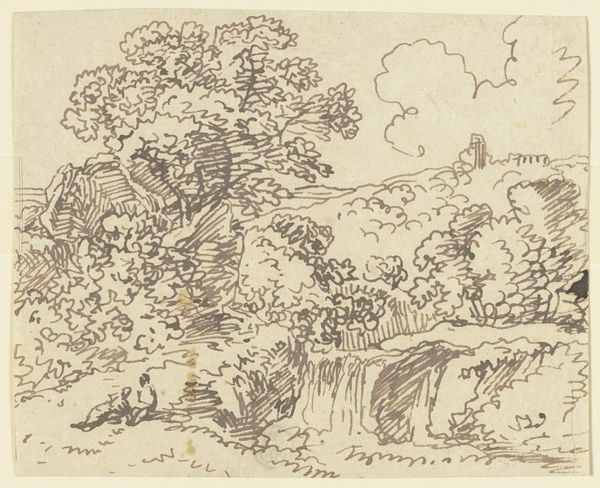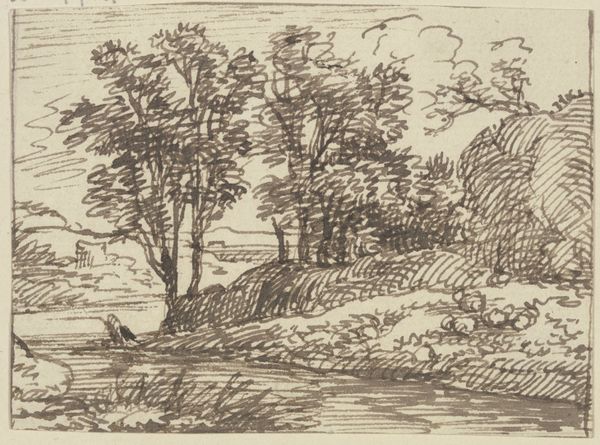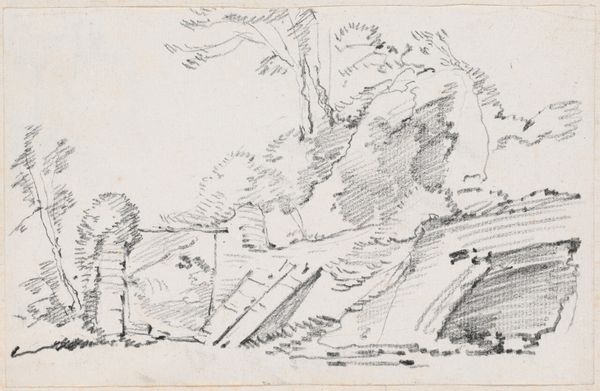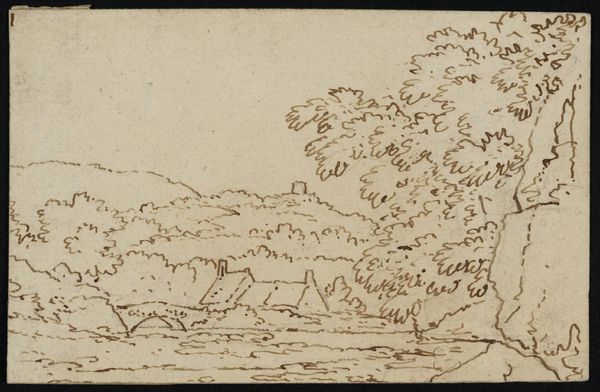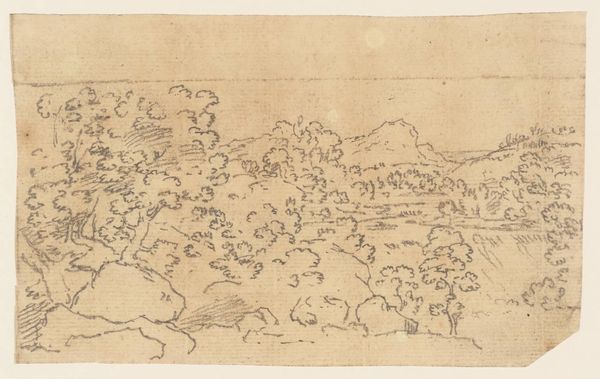
drawing, ink, indian-ink, pen
#
pen and ink
#
drawing
#
ink drawing
#
pen drawing
#
pen illustration
#
pen sketch
#
landscape
#
german-expressionism
#
ink
#
german
#
ink drawing experimentation
#
sketch
#
indian-ink
#
pen-ink sketch
#
15_18th-century
#
pen work
#
sketchbook drawing
#
pen
#
sketchbook art
Copyright: Public Domain
Curator: We’re looking at “Landscape with Trees,” a pen and ink drawing currently residing in the Städel Museum’s collection, attributed to Franz Kobell. Editor: There’s a somber stillness to this image that strikes me—it feels almost ghostly. The layering of ink creates such intricate textures, a dense but delicate effect. Curator: Indeed. Note the stark contrast achieved through the hatching and cross-hatching. Observe the linear quality of the composition. See how the density of lines models forms, creating depth? Kobell uses a fairly limited range of tonal values, relying instead on the sheer concentration of linework to build volume and texture. Editor: Yes, and one cannot ignore the date! As part of 18th-century German Expressionism, the socio-political landscape might offer insight, or we should think about who had access to landscapes at this time? What about land rights, or the concept of property itself, being embedded within this rendering of nature? Does that stillness come from an unacknowledged history? Curator: It's possible, of course, but focusing primarily on external conditions, as it seems that you do, rather than inherent artistic choices obscures an understanding of the artist’s manipulation of formal components to structure meaning. Look at the calculated arrangement of the trees to frame the horizon, the precise variations of line weights to express different material qualities – leaves versus rocks. Editor: And yet, that manipulation itself operates within historical parameters, shaping vision. Consider, too, the symbolic language inherent in landscapes, often reflecting a yearning for a simpler, agrarian life, idealized and perhaps unattainable. And consider how race and class informed landscape—a form frequently supported by wealthy, white patrons with little understanding of nature! Curator: Perhaps. But that is speculative. Focusing on intrinsic artistic elements reveals a structured formal investigation into the relationship between the foreground, middle ground and background of the image. Editor: I agree; however, an interpretation gains depth and significance from social awareness. Curator: It is intriguing how our interpretations can differ, even while observing the same formal details. Editor: Absolutely. The beauty of art is how it remains open to such dynamic conversations and allows space for divergent critical approaches.
Comments
No comments
Be the first to comment and join the conversation on the ultimate creative platform.
